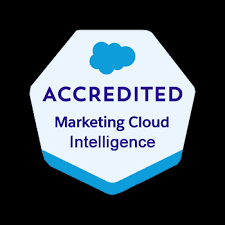What is Zero-ETL?
Zero-ETL represents a transformative approach to data integration and analytics by bypassing the traditional ETL (Extract, Transform, Load) pipeline. Unlike conventional ETL processes, which involve extracting data from various sources, transforming it to fit specific formats, and then loading it into a data repository, Zero-ETL eliminates these steps. Instead, it enables direct querying and analysis of data from its original source, facilitating real-time insights without the need for intermediate data storage or extensive preprocessing.
This innovative method simplifies data management, reducing latency and operational costs while enhancing the efficiency of data pipelines. As the demand for real-time analytics and the volume of data continue to grow, ZETL offers a more agile and effective solution for modern data needs.
Challenges Addressed by Zero-ETL
- Increased System Complexity: Traditional ETL pipelines can be complex, requiring detailed data mapping and managing inconsistencies. ZETL simplifies this by allowing direct data movement and integration, reducing system complexity.
- Additional Costs: Maintaining ETL pipelines can be expensive, especially with growing data volumes. Zero-ETL minimizes costs by eliminating the need for duplicate data storage and costly infrastructure upgrades.
- Delayed Time to Analytics, AI, and ML: ETL processes can delay data availability, affecting real-time analytics and AI/ML applications. Zero-ETL supports real-time or near-real-time data access, accelerating decision-making and operational efficiency.
Benefits of ZETL
- Increased Agility: By simplifying data architecture and reducing engineering efforts, Zero-ETL makes it easier to integrate new data sources and adapt quickly to changes.
- Cost Efficiency: Zero-ETL leverages cloud-native technologies that optimize costs based on actual usage, reducing infrastructure, development, and maintenance expenses.
- Real-Time Insights: Zero-ETL supports real-time or near-real-time data access, providing timely insights for analytics, AI/ML, and reporting, which enhances decision-making and customer experiences.
Use Cases for ZETL
- Federated Querying: Allows querying across multiple data sources without data movement, using SQL to join data from operational databases, data warehouses, and lakes.
- Streaming Ingestion: Facilitates real-time data ingestion from various sources, presenting data for analytics almost instantly without intermediate staging.
- Instant Replication: Functions as a data replication tool, quickly duplicating data from transactional databases to data warehouses using change data capture (CDC) techniques.
In Summary
ZETL transforms data management by directly querying and leveraging data in its original format, addressing many limitations of traditional ETL processes. It enhances data quality, streamlines analytics, and boosts productivity, making it a compelling choice for modern organizations facing increasing data complexity and volume. Embracing Zero-ETL can lead to more efficient data processes and faster, more actionable insights, positioning businesses for success in a data-driven world.
Components of Zero-ETL
ZETL involves various components and services tailored to specific analytics needs and resources:
- Direct Data Integration Services: Services like AWS’s integration of Amazon Aurora with Amazon Redshift automate data replication and transformation internally, removing the need for traditional ETL.
- Change Data Capture (CDC): CDC technology monitors and captures changes (inserts, updates, deletes) in source databases, replicating these changes in real time to target systems.
- Streaming Data Pipelines: Platforms such as Amazon Kinesis and Apache Kafka enable real-time data transfer, ensuring low-latency updates.
- Serverless Computing: Serverless architectures like AWS Lambda and Google Cloud Functions manage infrastructure and scaling based on demand, executing functions in response to data events.
- Schema-on-Read Technologies: Allows data to be accessed and analyzed in its raw format without predefined schemas, supporting flexible handling of unstructured and semi-structured data formats.
- Data Federation and Abstraction: Utilizes data federation and virtualization to create a unified data layer, simplifying access without extensive transformation or movement.
- Data Lakes: Store raw, untransformed data for on-the-fly analysis and transformation, managing diverse data formats without intermediate processing.
Advantages and Disadvantages of ZETL
- Advantages:
- Streamlined Engineering: Simplifies data pipelines by integrating or removing traditional ETL steps, accelerating analytics and machine learning.
- Real-Time Analytics: Enables immediate data analysis, allowing for faster decision-making and timely insights.
- Disadvantages:
- Complicated Troubleshooting: Integrated processes can make troubleshooting more complex, requiring a comprehensive understanding of the system.
- Steeper Learning Curve: The shift from traditional ETL may require data professionals to acquire new skills to manage ZETL processes.
- Cloud Dependency: Zero-ETL solutions are typically cloud-based, which may pose challenges for organizations not yet ready for cloud integration, raising concerns about data security and compliance.
Comparison: Z-ETL vs. Traditional ETL
| Feature | Zero-ETL | Traditional ETL |
|---|---|---|
| Data Virtualization | Seamless data duplication through virtualization | May face challenges with data virtualization due to discrete stages |
| Data Quality Monitoring | Automated approach may lead to quality issues | Better monitoring due to discrete ETL stages |
| Data Type Diversity | Supports diverse data types with cloud-based data lakes | Requires additional engineering for diverse data types |
| Real-Time Deployment | Near real-time analysis with minimal latency | Batch processing limits real-time capabilities |
| Cost and Maintenance | More cost-effective with fewer components | More expensive due to higher computational and engineering needs |
| Scale | Scales faster and more economically | Scaling can be slow and costly |
| Data Movement | Minimal or no data movement required | Requires data movement to the loading stage |
Comparison: Zero-ETL vs. Other Data Integration Techniques
- Zero-ETL vs. ELT:
- Commonalities: Both delay data transformations until after loading, reducing analytics time.
- Differences: Zero-ETL eliminates intermediate staging, reducing latency and improving real-time data access.
- Zero-ETL vs. API:
- Commonalities: Both enable querying across multiple data sources.
- Differences: Zero-ETL is a codeless approach requiring minimal manual coding, while APIs require custom code and can be more prone to security vulnerabilities.
Top Zero-ETL Tools
- AWS Zero-ETL Tools:
- Aurora and Redshift Direct Integration: Automates real-time analytics by integrating Amazon Aurora with Amazon Redshift.
- Redshift Spectrum: Allows SQL queries on data in Amazon S3 without transformation.
- Amazon Athena: Provides serverless analytics using SQL or Python.
- Amazon Redshift Streaming Ingestion: Supports real-time data ingestion from Amazon Kinesis Data Streams or Amazon MSK.
- Zero-ETL Tools from Other Cloud Providers:
- Snowflake: Enables data warehouses and lakes handling unstructured data with Zero-ETL architecture.
- Google BigQuery: Executes real-time SQL queries on large datasets and integrates with Google Cloud services.
- Microsoft Azure Synapse Analytics: Offers real-time data ingestion and analysis through a unified analytics platform.
Conclusion
Transitioning to Zero-ETL represents a significant advancement in data engineering. While it offers increased speed, enhanced security, and scalability, it also introduces new challenges, such as the need for updated skills and cloud dependency. Zero-ETL addresses the limitations of traditional ETL and provides a more agile, cost-effective, and efficient solution for modern data needs, reshaping the landscape of data management and analytics.













